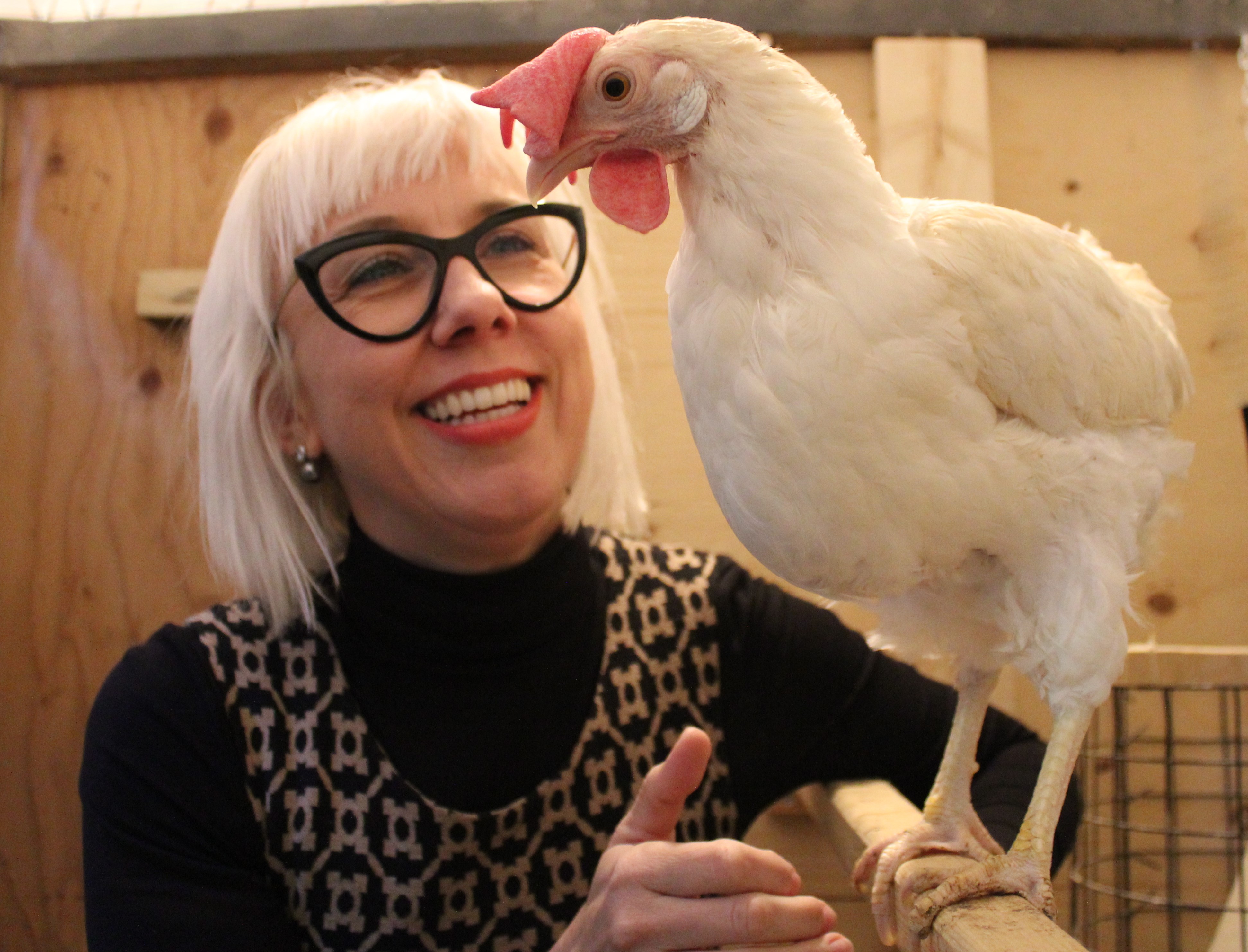
As Canadian egg farmers transition their flocks from conventional cages to more spacious “furnished” cages, University of Guelph researchers have conducted a first-ever study on factors contributing to feather pecking in this new housing system and ways to prevent it.
The study revealed that 22 per cent of the birds in the new cages exhibited moderate or severe feather damage that was likely due to feather pecking.
Published in the journal Animals, the study found that several factors contributed to feather pecking, including genetics, lack of access to a scratching or foraging area and midnight feedings. The study was featured in a story in Ontario Farmer.
“This study is the first in Canada – and possibly North America – to look at this issue in furnished cages, and we hope it will inform farmers about the factors involved so that they can understand the problem and develop action plans to prevent it,” said Prof. Alexandra Harlander with the Campbell Centre for the Study of Animal Welfare, who co-authored the study with post-doctoral researcher Nienke van Staaveren.
Feather pecking is destructive nipping at another hen’s feathers and occurs in all forms of housing, from conventional cages, to free-run facilities, to free-range farms. It is one of the significant challenges facing egg farmers, said Harlander.
“No farmer wants to see this. It’s heartbreaking for them to see their flocks with damage to their feather cover.”
It’s not clear what causes feather pecking; the best theory is that it is a form of redirected foraging behaviour, said van Staaveren.

“But even in housing systems where there is a lot of substrate to peck at, it can still occur. So it’s tricky to control and something we are still trying to understand,” she said.
Pecking leads to a loss of feather cover, which makes it difficult for birds to maintain their temperature and navigate their environment. What’s more, once a bird has been singled out for pecking, it becomes a target for further pecking.
One of the goals of the study was to provide feather-pecking management guidance to farmers who are transitioning to alternative housing systems to meet the Egg Farmers of Canada’s call for alternative hen housing systems by 2036.
For this study, the research team sent questionnaires to egg farmers across Canada who housed their chickens in furnished cages. They asked the farmers to score the feather cover of 50 of their birds on a three-point scale, to estimate the prevalence of feather damage.
Of the 26 flocks, approximately 1 in 5 birds in the furnished cages exhibited moderate or severe feather damage. The factors that had the most influence on feather damage were older flock age, brown-feathered birds, midnight feedings and lack of a scratch substrate.
Van Staaveren said brown birds are likely more susceptible to pecking because the stronger contrast in colour when they are pecked and drop feathers attracts further pecking.
Another key factor was midnight feedings. Farmers may turn on lights at night to wake the hens and encourage feeding so they take in more calcium to increase eggshell quality and laying productivity. The study found midnight feeding was linked to more pecking, likely because awake chickens find easy pecking targets in inactive birds.

Van Staaveren said it appears the practice ends up being costly since feather pecking not only raises the mortality risk of the hens but also causes the birds to eat more to stay warm.
“Although there weren’t many farmers who did midnight feedings in our stud , I don’t think it’s worth the risk of disturbing your birds if it’s going to lead to these issues,” she said.
What struck van Staaveren most about her team’s findings was the wide range of feather damage: some flocks had absolutely no hens with feather damage; others had lots. Most egg farmers were perplexed as to why. This emphasizes the need for farmers to regularly monitor their hens’ feather cover, said van Staaveren.
“What I would really like farmers to take from this research is the need to track feather damage regularly , so they can understand what is happening with their flocks and try different methods to try to reduce damage.”